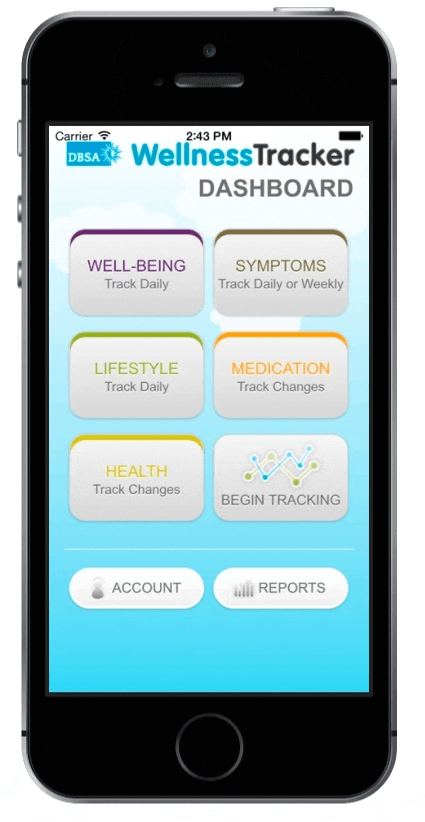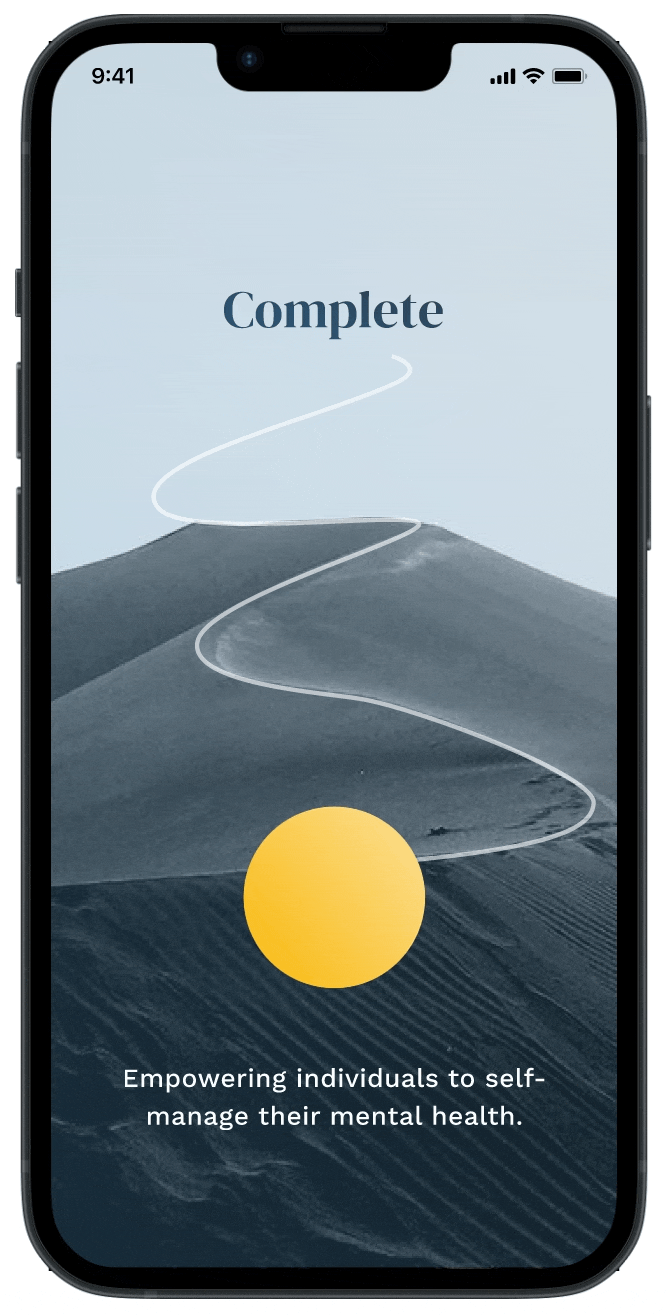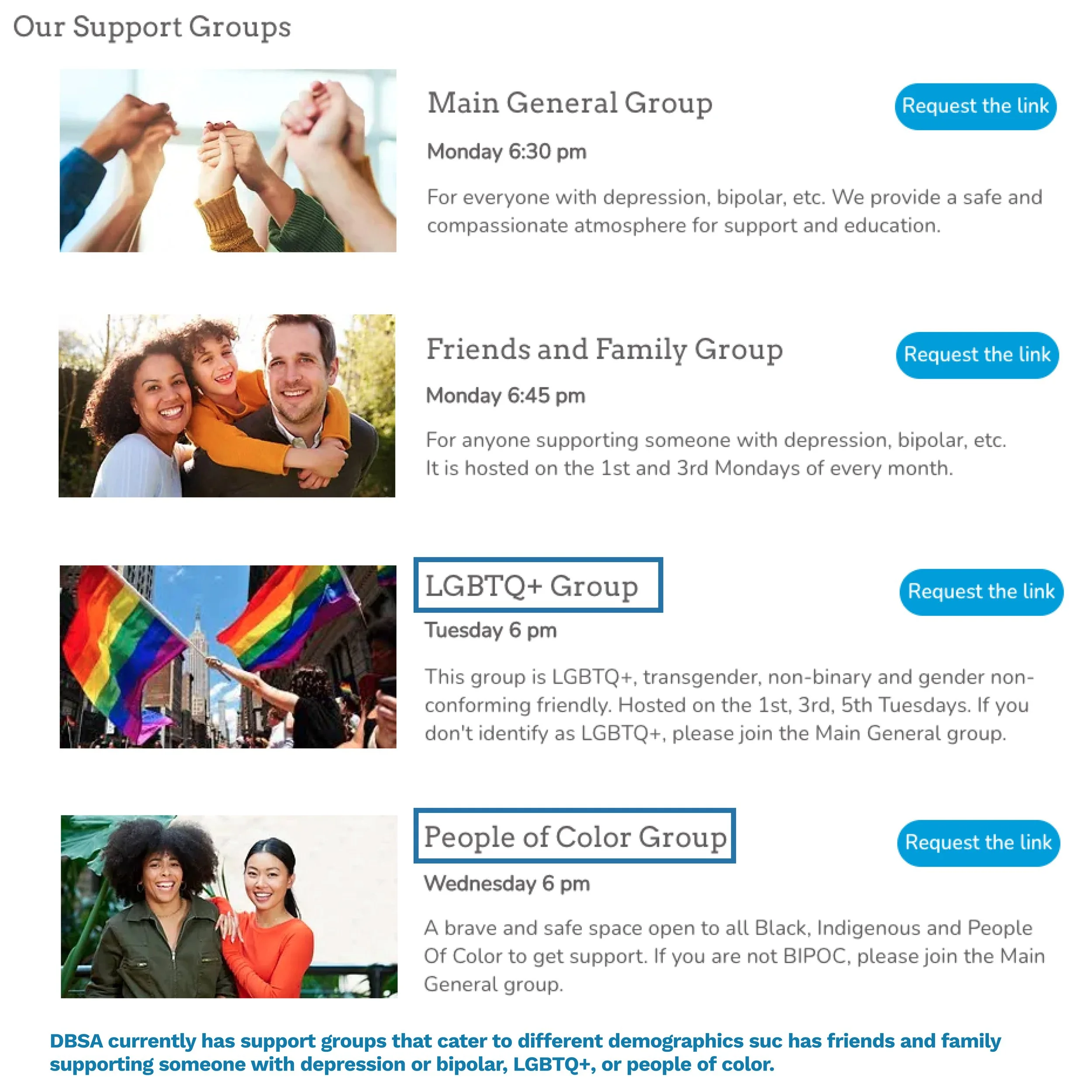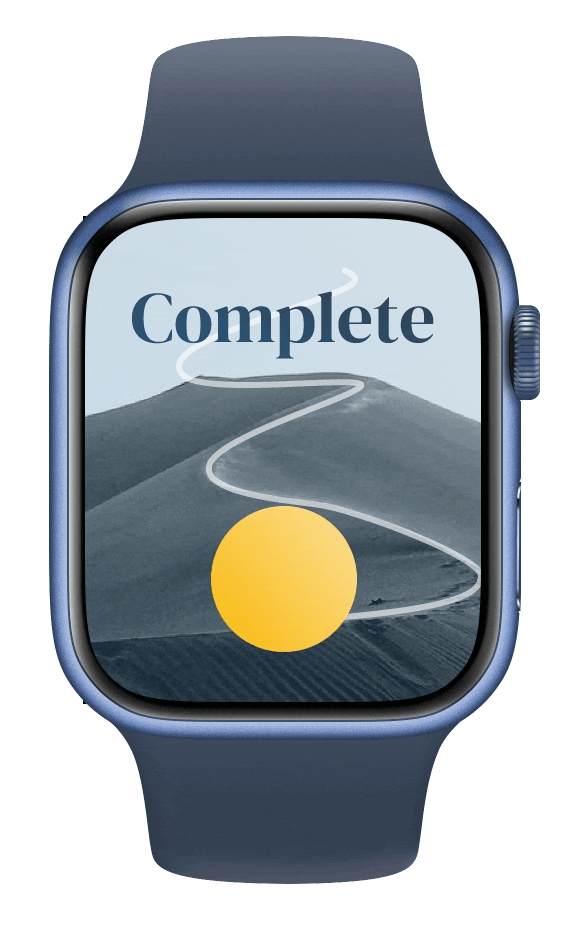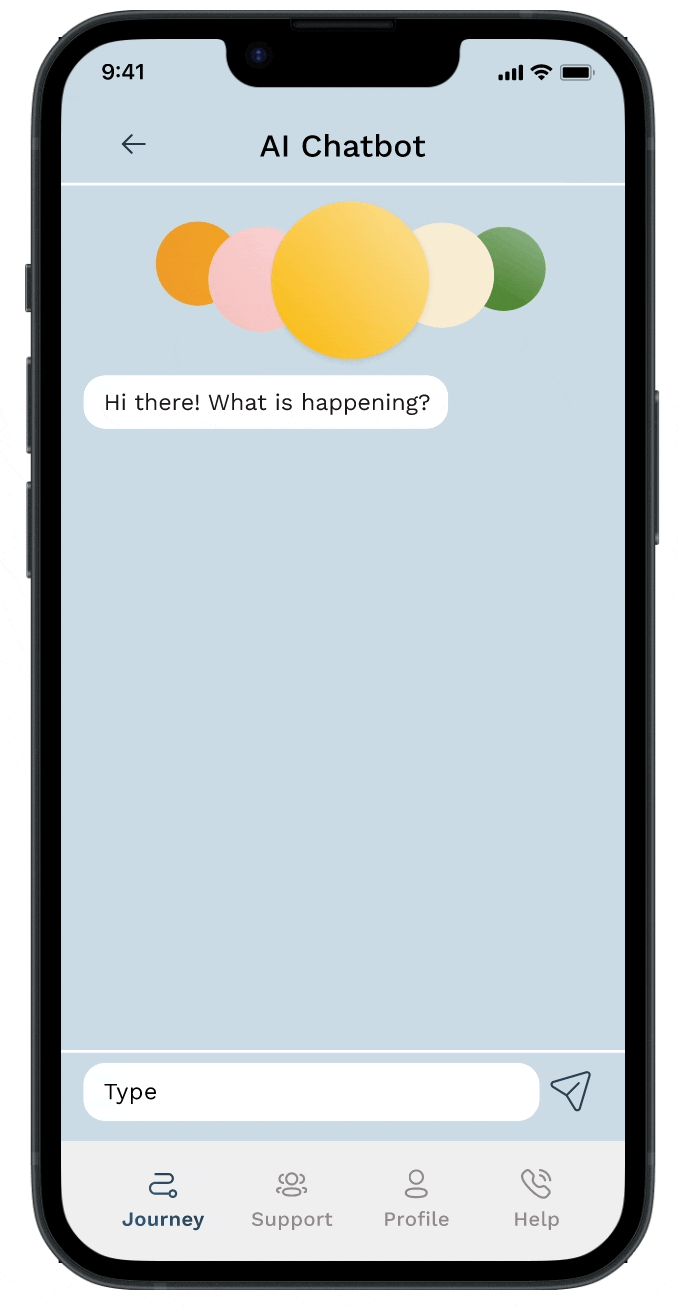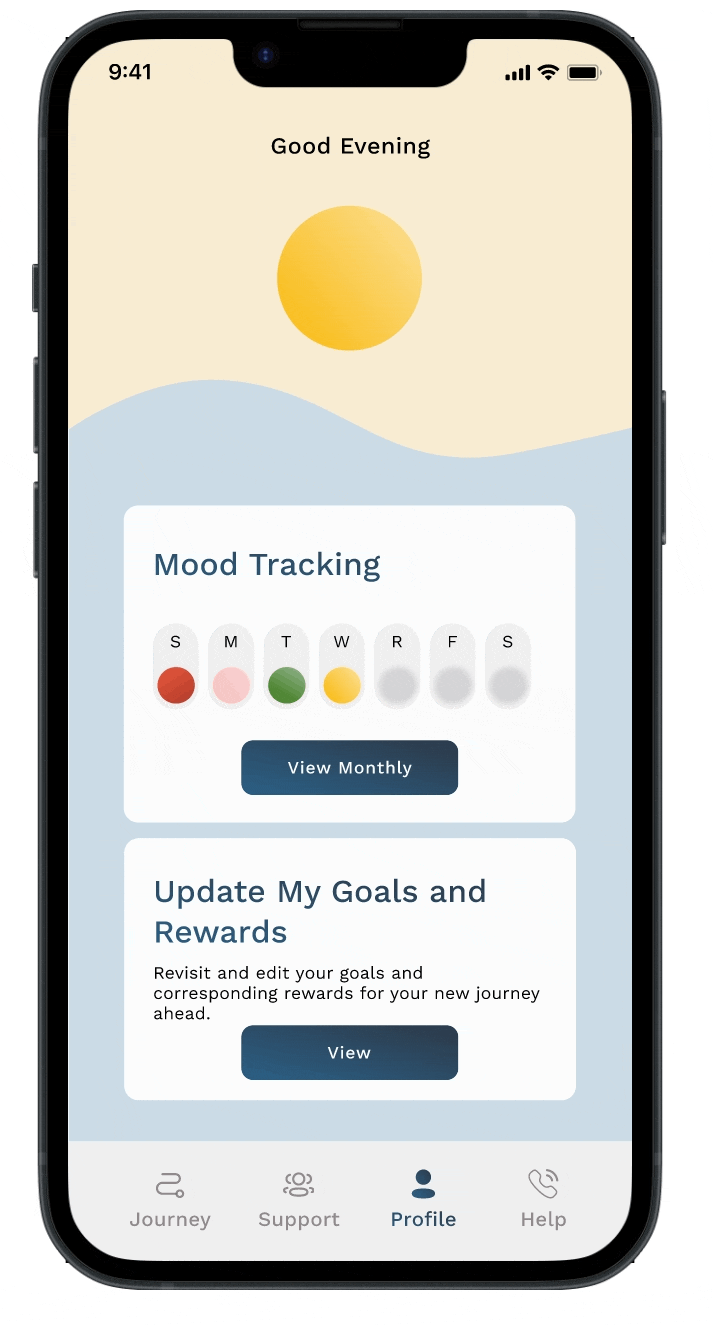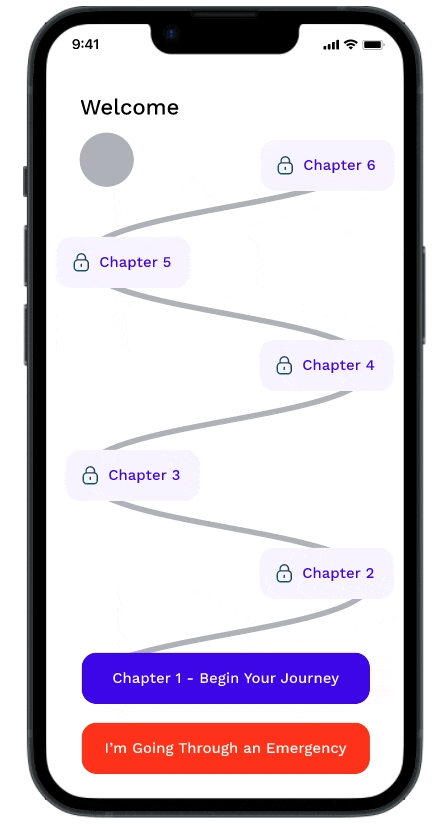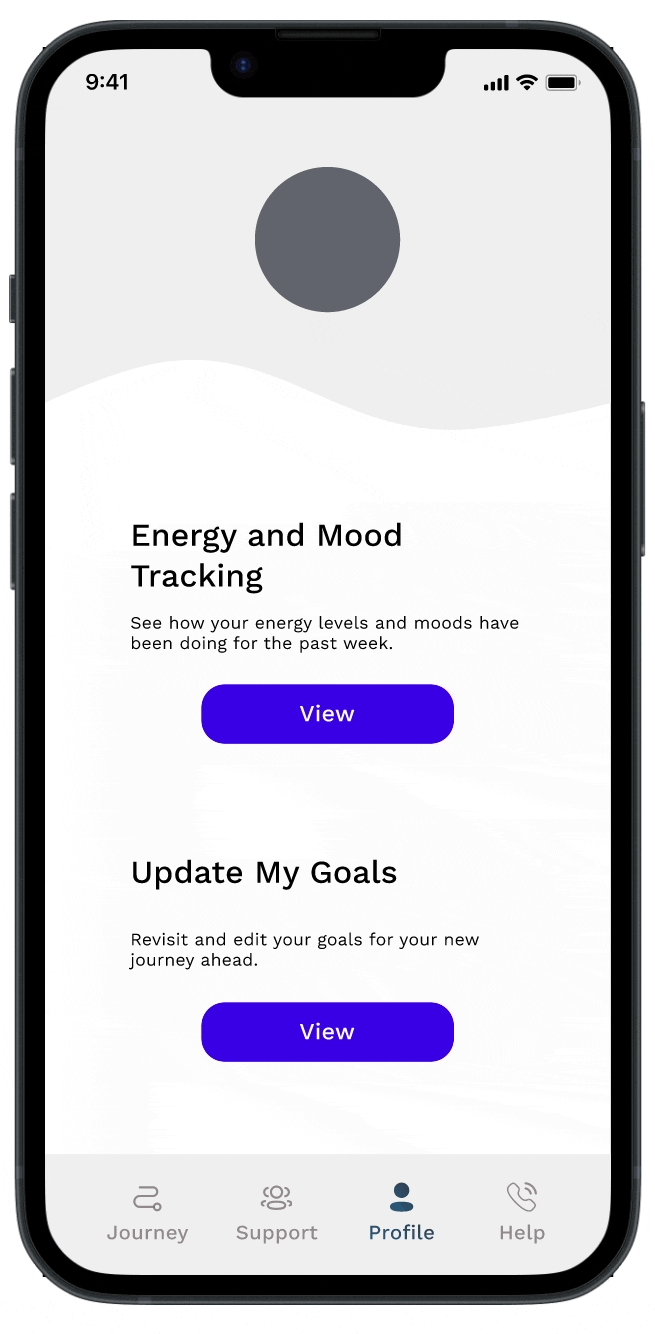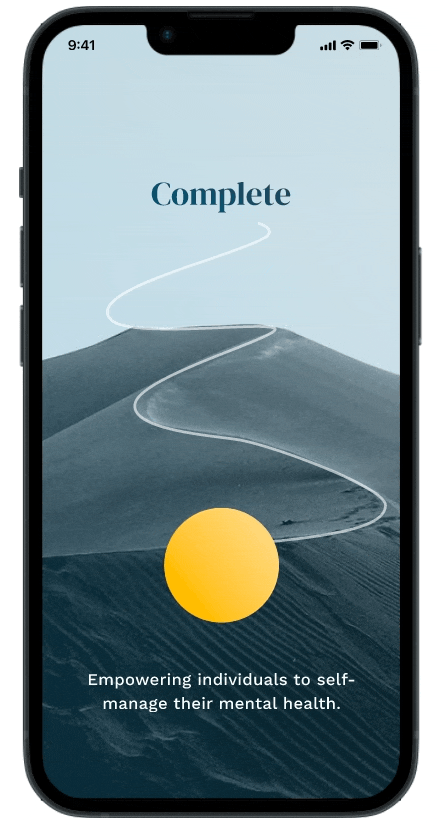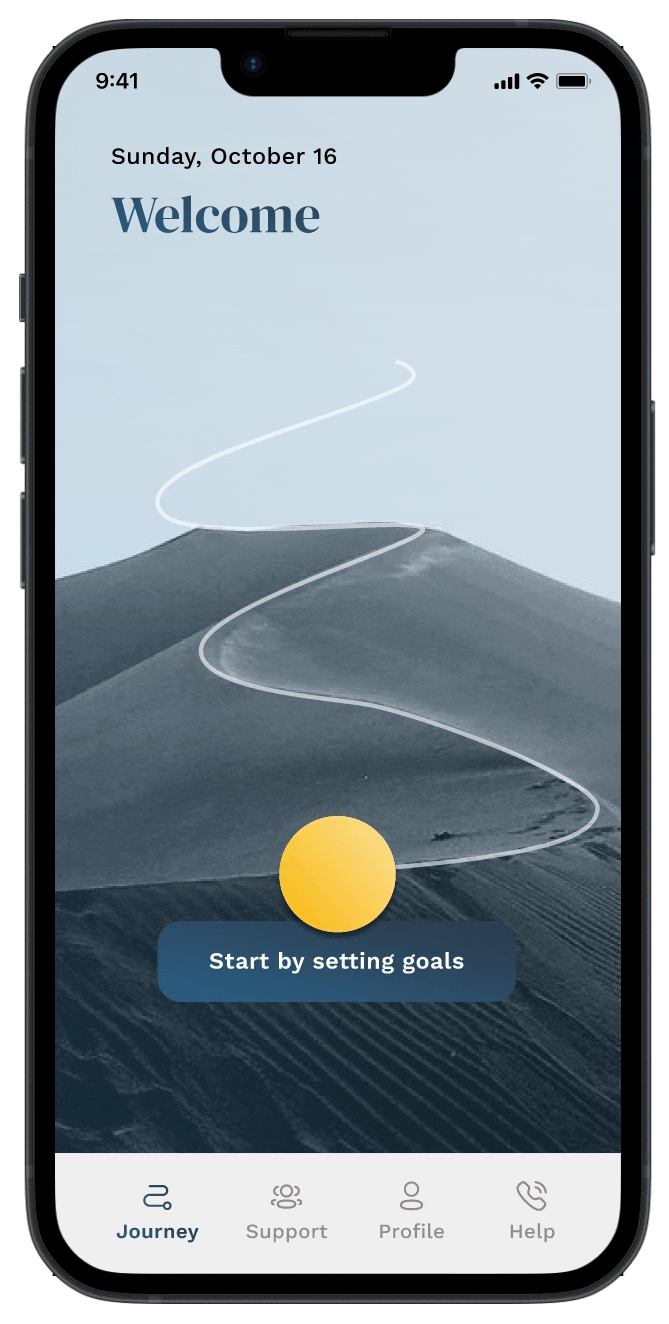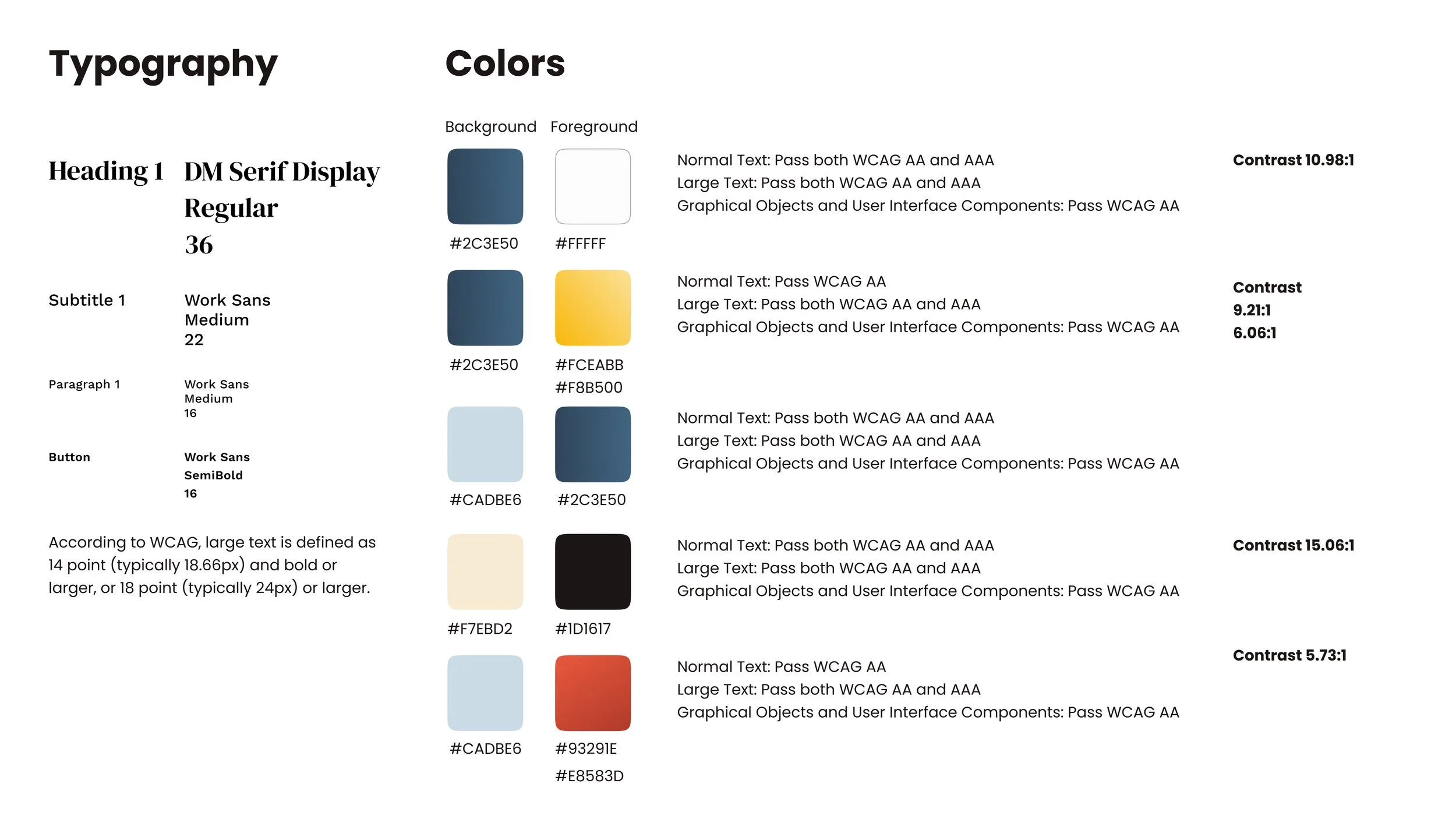
Designing a Mental Health Platform for Depression and Bipolar Support Alliance (“DBSA”)
Role - Product Designer
Timeline - October 15-16, 2022
Duration - 24 hours
Team - 4 Product Designers (teams are encouraged to be between 3-6 people)
Type of Design Services Offered - UI / UX, end-to-end design process
Overview
Designing for Humanity
- I was invited by DBSA to design an empowering mental health self-managing tool that focuses on an integrated approach to wellness at the Girls in Tech San Francisco 2022 Hackathon with 3 other designers
- For the 5th year in a row, Girls in Tech San Francisco hosts a hackathon every year to solve real-life issues through engagement, education, and empowerment in technology and entrepreneurship
- DBSA is the leading national organization providing hope, help, support, and education on mood disorders, which affect over 21 million Americans, account for over 50% of the nation’s suicides every year, and costs $23 billion in lost workdays and other workplace losses
- DBSA has extensive resources of 450 support groups across the country that reaches millions of people each year with in-person and online peer support
The Challenge
Creating a safe and effective space with limited resources
DBSA had an archived “Wellness Tracker App” historically, but it fell into disrepair years ago. After interviews with DBSA’s stakeholders, they wanted to create a free, accessible, and centralized mental health management platform with 24/7 emergency support. Solutions are assessed based on their innovation, impact, and feasibility. We are expected to utilize our prototyping, analytical, or strategy skills to propose meaningful ideas for change.
Before
After
Research
A balance between self-management and support outreach
I did a lot of discovery work which included going through interviews with stakeholders of DBSA to find out what the organization wants for the users, the 30+ archived app reviews, and interviews to explore user needs. Here are the top things I learned:
1. Self-management: Users want to self-assess and manage their mental health with easy-to-use digital tools
- There were limited resources on the app indicates what works for others might not work for a specific individual
- Users want apps that cover the entire spectrum of their mood, being able to add specific reasons for their answers on how their day is going
- Users find it hard to keep track of their moods so they desire a mood tracker to show graphs on the application
2. Support - join free DBSA peer support groups to get a sense of community and support, especially for the LGBTQ+ / People of Color demographics
- Users need a safe space to take the time to heal
- Users find it expensive to find a therapist that matches your needs
- Users find it hard to find people who truly relate
3. Users can join from any geographical location with an app that is easy to use and maintain
- Historically, it was cumbersome to log mood and progress across different resources / platforms
- Historical information disappears and makes it impossible to edit
- “Would be improved by reducing the number of clicks required to navigate through the app and log items”
4. People with and without existing mental illnesses, whether diagnosed or undiagnosed, need mental health support and should be able to benefit from the all-inclusive self-help platform
People with existing mental illness
- Pain Point: Frustrated about tired repetition of his progress to different resources, people, and places that don’t address his experiences
- Need/Want: Desire to build actionable daily habits that help combat symptoms of mental illness and give back a sense of control in life
People who want to enhance their current well-being
- Pain Point: Don’t feel comfortable sharing mental health issues with family and friends since it’s hard to relate to others due to unique personal circumstances
- Need/Want: Desire a free and accessible resource that monitors and improves her mental health
The Goal
How might we remove the barrier of cost and access to care, and empower all individuals to self-manage their mental health?
Ideation
Making Baymax from Disney come alive?
Our team did a 10-minute rapid ideation session to compile our core ideas and voted on the most innovative/interesting ones to explore.
I pitched my designs in blue sticky notes above for…
1. Self-assess and self-manage mental health with easy-to-use digital tools
- Telehealth, helpline, positive reinforcement based on condition all-in-one platform
- Immediate exercises for different symptoms/pre-noted mental illnesses
- Baymax from Disney on a digital form via wearables (e.g., the app can guide you through a panic attack through actionable steps)
- Journal entries/diary entries where they also can post pictures, voice recordings, and videos as a way to encourage self-reflection
Team Takeaways: Everyone loves the ideas above in general and wanted to learn more about what Baymax in a digital form means. After I explained that Baymax is a personalized wellness mascot that helps you navigate through your reactions through actionable steps by diagnosing your symptoms, the team thought it was a novel and exciting idea. However, wearable technology was not an option for the platform DBSA wanted us to design. Instead, we decided to focus on developing an all-in-one telehealth platform that includes an emergency helpline.
2. Encouraging uses to seek support from the community
- Hobby and event-focused groups that allows people to join classes to create something together
- Therapy in the form of automated response system built based on psychologists and doctors
Team Takeaways: our team consented that these ideas are novel but the business limitation of how to incentivize or compensate the psychologists, doctors, instructors as a constraint since the platform should be accessible for all kinds of people. Thus, we focused on free features that we can incorporate into the model.
The Aftermath
My Personal Innovative Concepts
Post Hackathon, I revisited concepts I came up with during the team ideation session (in blue post-it notes above) such as wearables, Baymax from Disney, AI chatbots, personalized content and reward systems to explore more creative and fluid solutions.
1. Wearable technology to track physical symptoms and activity levels
By analyzing this data, individuals can get a better understanding of their mental health and identify patterns or triggers for mood changes and receive actionable, immediate exercises for different symptoms/pre-noted mental illnesses
2. AI-powered chatbots to conduct mental health assessments
By asking individuals a series of questions, the system is able to provide personalized recommendations based on user responses and a psychology backed database.
3. Personalized content and rewards
Personalized content can be tailored to individual group members needs preferences, and progress, improving engagement and enhancing the support group experience. This includes a reward system that tailors to a user’s needs and wants (i.e., trip to somewhere if that’s what the user is interested in) funded by hospitals and investors of the business in exchange for partnership and business, users can pay by insurance $0 copay/premiums.
Information Architecture
You are your own character in this game called life
Our prototype incorporates gamification features, including self-assessment and self-management tools, through a character-based journey. These features also align with our goal of making the platform free and accessible to all demographics. To maintain consistency with DBSA’s brand, we integrated their pre-existing features such as on-demand community support and a 24/7 crisis helpline. These additions will enhance the platform’s familiarity with DBSA’s existing user base.
Wireframes
A daily mental health journey with yourself
We decided to develop an game-like all-in-one platform that navigates the user through a journey of tasks everyday based on their customization during onboarding to improve their mental health through daily habits, support group resources, and emergency help.
1. Onboarding - walks through a series of self-assessment questions to generate personalized tools that the users thought were helpful or would be excited to try out.
2. Journey - the home page “journey” is set up like a book with chapters that the user needs to unlock by doing everyday mental health actions like logging their own feelings, reflecting through journaling, with an emergency button on the home screen to provide access to a mental health professional / 911.
3. Support - contains the variety of group support sessions that DBSA already provides to encourage users to reach out for help in a safe space to connect with others going through similar situations or disorders.
4. Profile / help - allows users to change goals, view statistics on past mood trends, and seek emergency support as an additional resource if they need.
The Final Solution
Evoking a sense of adventure
During the 24 hours of hackathon, the final prototype definitely took the most time for all four of the designers, including myself to finish. I spent a fair share of time coming up with the color palette with the primary dark blue and supplementary colors for the team to align with the rest of the prototypes while we simultaneously added more details on the designs until the 23rd hour right before our presentation. At one point due to time constraints, we also had to work on the final prototype simultaneously when our wireframes weren’t 100% complete since the high-fidelity is what we are presenting.
1. Onboarding
2. Journey
3. Support / Profile/ Help
Accessibility Testing
Equal access to mental health care
To ensure the app is accessible for all-users, I checked that the primary colors and fonts pass the Web Content Accessibility Guidelines audit with different combinations of the main colors and typography in our designs.
The Conclusion
The Importance of Time Management
Reflection
GITSF has strict presentation requirements that indicate only projects with submissions will be demoed and team must be present during the demo and Q&A session to clarify any questions from the judges. Our solutions were judged based on these following judging criteria:
Quality of the idea: is the idea a strong minimal viable product for the customer to use today?
With strong implementation of our application, we believe our idea is impactful for the general public with or without mental illness to self-manage their wellbeing at large. This is a fulfillment to DBSA’s wish as well.Design: how well thought out and complete is the design?
Our idea of an all-in-one mental health platform with self-guided journeys and on-demand support is easy to use, visually appealing, intuitive and flows naturally and easily for the user. We were very proud to have one of the most innovative designs from feedbacks of other designers after our presentation.Presentation: is the proposal able to drive and improve business processes based on the challenge?
Looking back, our time management could have been better to shift towards preparation and synthesis of our presentation. Since we had to submit 4 mins’ worth of content including a deck and portfolio walkthrough, it was difficult to narrow down what to present and we couldn’t cover how we drive and improve business processes based on DBSA’s challenges. If I could do the Hackathon over again, I would ensure our team spends more time on our presentation delivery as this is one of the most important skills as a product designer.Technicality: does the work include practicability and ease of implementation in a customer environment?
Our final solutions definitely had one of the most high-fidelity prototypes in terms of technical effort, which makes it more practical and easy to implement for DBSA in a customer environment.
North Star Visions
If I could spend as much time as we want on this product, I would:
Conduct user interviews as part of the research process
Conduct two rounds of usability tests to further iterate our designs
Summary
Since this was my first Hackathon experience, it was both extremely rewarding and stressful to complete an end-to-end design experience in 24 hours with three other designers. We felt really good going into the awards ceremony about our designs but did not end up winning the Hackathon. However, we also tried our very best to work around the clock during the 24 hours together since we had members in different time zones (Asia Pacific, Pacific Standard, and Eastern Standard Times).


